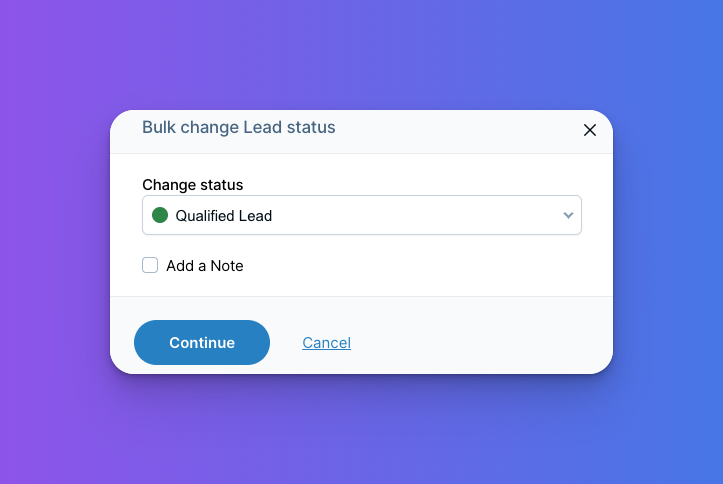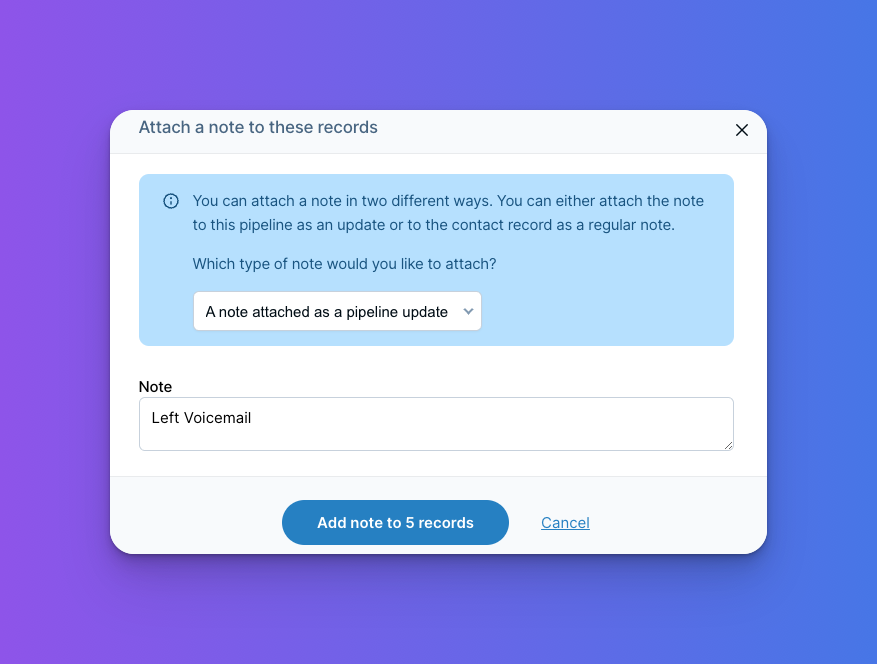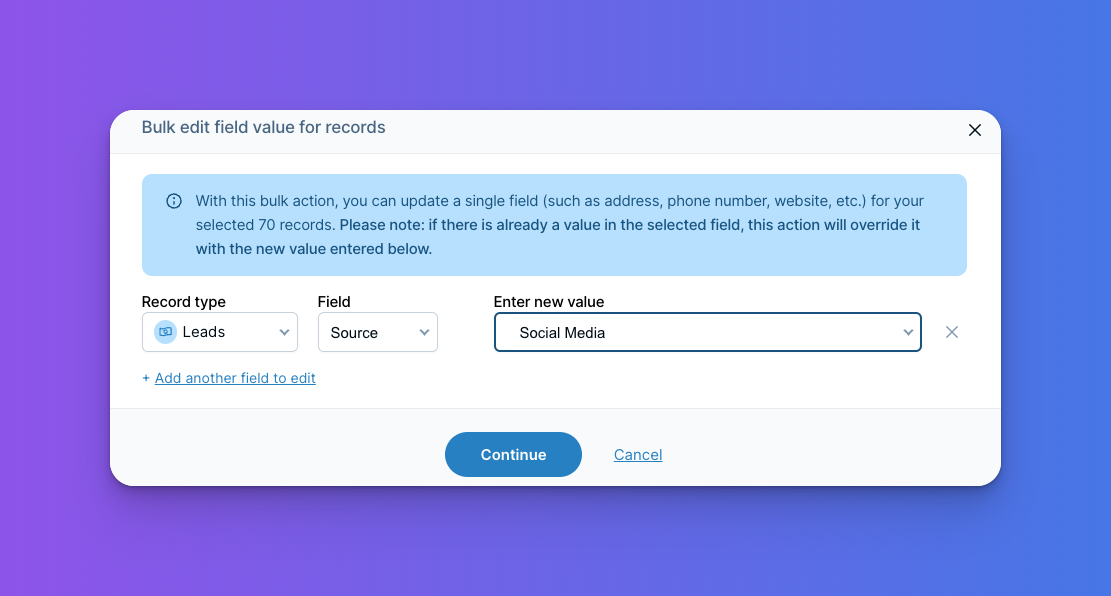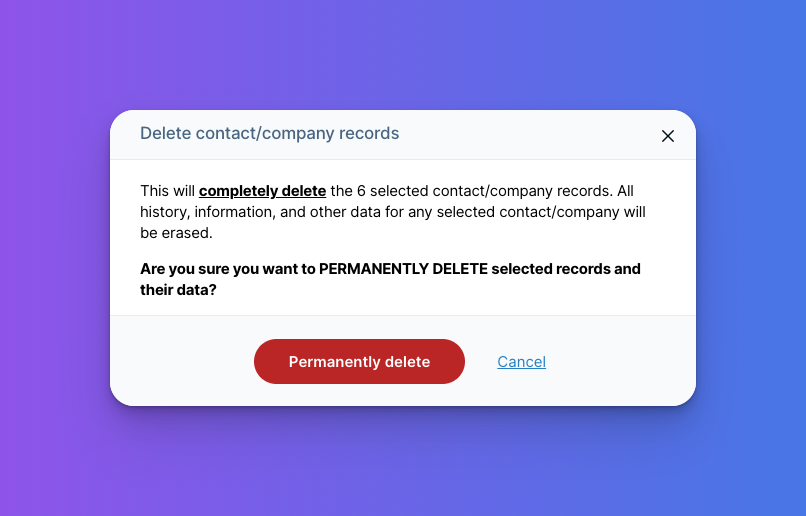In May, we released new bulk actions on the contact page. (Check out the announcement on contact page bulk actions here if you haven’t already.) Now, our developers have made it possible to take bulk actions on the pipeline report too.
Many times in calls with customers, I’ve heard someone say that they wished they didn’t have to update pipeline items one by one. Before now, there were no actions that could be taken in bulk on this page. Now there are ten actions you can take in bulk. So this is really ten new features rolled into one. No need to manually update each individual record - make changes to as many pipeline records at the same time as you want.
With this new feature, it will be easier to keep your pipeline up-to-date. Never fall behind again—keep yourself and your pipelines organized.
Wondering how to find these new bulk actions? Watch the video below to see where you can find these options.

Take a look at the ten new actions you can take on your pipeline reports:
1. Change pipeline status
If you are needing a place to start with bulk actions on your pipeline reports I’d start here. This is the feature that I think you’ll use most often in your day-to-day work with your pipelines. Let’s say you have a sales pipeline with tons of prospects. Maybe you called through a list of your prospects and qualified 10 of them today. In that case, simply check off those ten prospects from your list and change all of them to the status “qualified lead” at once.

2. Attach a note
This option is really two options rolled into one. From the pipeline report, you can now choose to attach a note either to the contacts themselves, or as an update to the pipeline. This is a great option if you have the same update to make to a bunch of contacts in your list. Now, there’s no need to make that update one by one. For example, maybe you called a bunch of leads and want to leave a note on a handful that you left a voicemail. Go ahead and select those five leads from your list and then add a note in bulk to all of these records that says “left voicemail.” And you’re all set. Don't waste time typing that message out five times.

3. Attach a task
If you’re a manager, this task option will be especially helpful. Quickly assign a task for your employee to “follow up” with contacts and/or companies in their pipeline, for example. Or use this feature to keep yourself organized.

4. Attach a group
Groups and pipelines are two features of the CRM that can work really well together. For example, maybe you have a subset of your pipeline that you want to add to a new “VIP” client group for the clients you work with the most frequently. Go ahead and find all of your VIP clients in your client pipeline and add them to this new group. Now, you’ll have an easy way to find your most loyal clients in the future.

5. Attach another pipeline item
You can also attach another pipeline item to the records in your pipeline report in bulk. You can either attach the same type of pipeline to the existing records, or a different type of pipeline. For example, let's say you have a "lead" pipeline and a "client" pipeline. Once you move your leads to the status "contract signed," you consider them a client. You can go ahead and filter your lead pipeline to just show leads in the contract signed status of the pipeline. Then, go ahead and use this option to add all of these contacts into the first stage in your client pipeline. That's just one way you can use this option!

6. Assign to user
Need to delegate a customer issue, project, lead, or any other type of pipeline item? Go ahead and reassign your pipeline items in bulk to another user. This feature is especially useful for managers.

7. Edit field value
You can now edit any fields on your pipeline in bulk. This is a great option if you entered a bunch of contacts and/or companies into your pipeline, but forgot to fill out a particular field. Now, you can easily add “social media” as the source for 70 leads at once. *This option is one you’ll want to be careful with - editing the field value will override whatever is already in the field. So this option is best to use with a field that you know is empty or doesn’t contain important information.

8. Export/Copy data
Easily select particular records to export. Or just copy email addresses to your clipboard. This option is useful if you’re looking to sent out a mass email. Just select who you want to email from your pipeline report and choose “copy email addresses to clipboard.” Go ahead and paste those email addresses into the email program of your choice. Remember, you can always filter your pipeline first if you want to just email people in a particular status.

9. Delete pipeline items from the CRM
I’ve talked to many different customers who wanted to clear out a bunch of old pipeline items. Whether it’s old customers, old leads, or old orders, at a certain point, you might feel that you need to clean up your pipeline. With bulk actions, this is easy to do. Simply select “delete pipeline items from the CRM.” As a little tip, go ahead and start by sorting your pipeline from least to most recently updated. That way, you’ll easily see all of those old pipeline items which may no longer be relevant. Then, simply check the box next to anything you want to delete. Note that this deletes the attached pipeline item, not the contact or company itself. If you’re looking to delete the contact and company from the CRM entirely, take a look at the next option in this blog post.

10. Delete contacts from the CRM
This next option might sound pretty similar to the last one. The difference is that this option will delete the actual contacts and companies from the list entirely. Any associated information (pipelines, notes, history etc.) will also be deleted. This is the option you’ll want to use when you’re not just cleaning up your pipeline, but instead your entire CRM.

We hope that this new feature saves you time and reduces the amount of manual data entry you need to do. As always, please don't hesitate to reach out with any questions or feedback.


.png)
Sign up to receive updates in your inbox